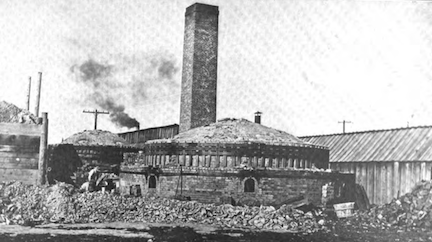
WASHINGTON BRICKS

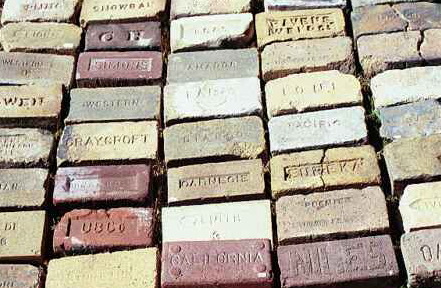
Brick collecting can be fun and educational. Once you start collecting and researching bricks, you will never
look at bricks the same way again. Brick collectors want to know what type of brick it is, who manufactured it,
what brickmaking process was used, and when and where was it made. Bricks in general are easy to find, but
some may be rare and difficult to find. The low price of bricks makes it an affordable hobby. Bricks have little
monetary value, partly because most collectors would rather find or trade with other brick collectors. In fact, the
International Brick Collectors Association, which has over 1,000 members worldwide, discourages the buying
and selling of antique bricks. Members meet at their swap meets to freely trade bricks.
Many collectors search for bricks that are stamped with a brand name or a statement or an artistic design.
There are many types of brick, such as pressed brick, firebrick, face brick, paving brick, hollow-tile brick,
and even common duty brick. They come in various sizes and colors, including white, gray, cream, buff, yellow,
salmon, pink, red, brown, and black. Some collect bricks because they are associated with an historic event or
a famous building. It's like owning a piece of history.
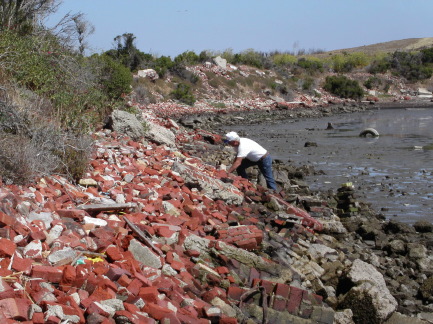
Collectors can find bricks just about anywhere. Some of the places where I have found bricks include former brickyards,
construction sites, abandoned building sites, demolition sites, dump sites, along stream courses, and beaches.
I have purchased a few at garage sales, flea markets, and building materials yards usually for a few dollars. At
building demolition sites,
I ask workers if they could spare a brick; some are happy to give. Some collectors will trade bricks. But once
your friends learn about your unique hobby, they will become your best source of bricks. Half of the bricks in
my collection were given to me by friends and family who love to find bricks for me.
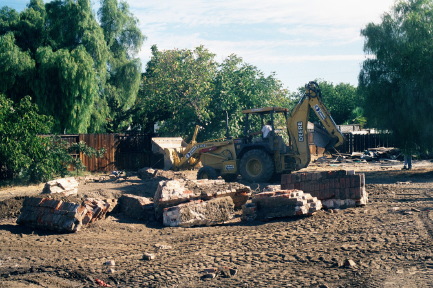
Bricks found in the field will often be dirty and caked with mortar. To clean such bricks, use a
cold chisel and hammer to knock off the mortar. An awl or a 4-inch nail works well in removing mortar
in smaller areas around the brand name and frog. Remove the mortar carefully so as not to damage the
lettering or the edges of the frog. Some bricks are soft and will crack or break if hit too hard
with the chisel. For stubborn mortar, soak the brick in a bucket of cold water for a day or two to
make it easier to remove the mortar. After removing the mortar, give the brick a good scrub with a brush
with plastic bristles and some water to remove the remaining dirt. Add a little dishwash soap or borax
to the water if needed. Your bricks will be clean and ready for display.
So how do collectors display their brick collection? Some may have specially made shelves to hold those rare
and important bricks. I have shelves made of 2 by 4 fir studs that holds 30 bricks and fits nicely in the garage.
Some practical collectors like to set them in the patio or sidewalks. Others will use them to decorate brick
walls or border gardens. A few are fortunate to have their bricks displayed in museums. The great thing about
bricks is that they are durable, so they can be stored or displayed just about anywhere.
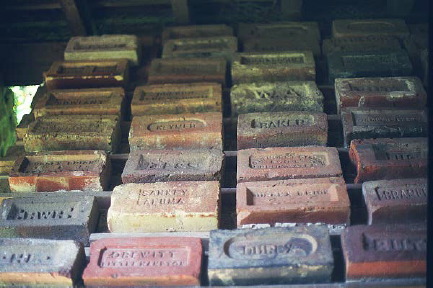
The most challenging part about brick collecting is the historical research. Information about bricks is not
easily found and may require some searching in local history books, trade journals, directories, and newspapers.
For Pacific Northwest bricks, there is an excellent book by Karl Gurcke entitled "Bricks and Brickmaking,"
University of Idaho Press, 1987. Also the bulletins and reports of the Washington Division of Geology. But
hopefully this website should ease the pain of finding that information.
Contact Dan Mosier at danmosier@earthlink.net.